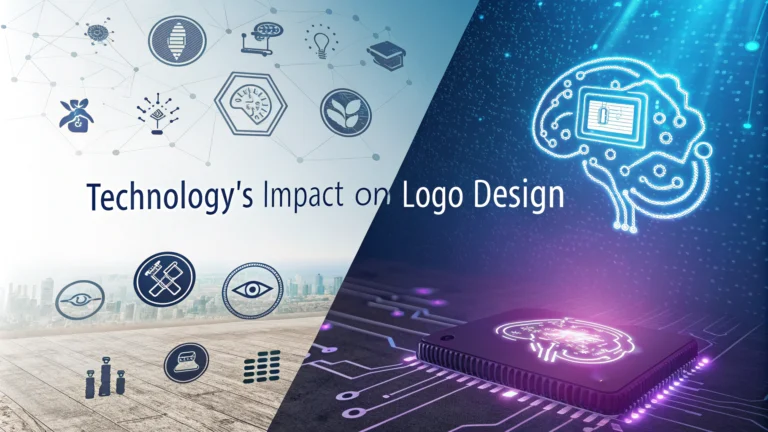Technology has revolutionized how designers create and implement logos across different platforms and devices.
Digital tools like Adobe Illustrator, Sketch, and Figma have replaced traditional pen-and-paper methods, allowing for precise control and quick iterations.
Key Technology Impacts on Logo Design
- Responsive Design: Logos must adapt to different screen sizes and resolutions
- Color Systems: RGB for digital and CMYK for print
- File Formats: Vector files (SVG, AI, EPS) for scalability
- Animation: Dynamic logos for digital platforms
Essential Digital Design Tools
| Tool | Best For |
|---|---|
| Adobe Illustrator | Vector-based logo design |
| Figma | Collaborative design work |
| Sketch | Mac-based interface design |
Technical Considerations
- Save logos in multiple formats (PNG, JPG, SVG, PDF)
- Test designs across different devices and platforms
- Create versions for dark and light backgrounds
- Maintain proper spacing and padding for digital use
Resolution Requirements: Modern logos need both high-resolution versions for print (300+ DPI) and web-optimized versions for digital platforms.
Design Tips for Digital Age
- Keep designs simple and scalable
- Test readability at small sizes
- Consider social media profile picture requirements
- Create favicon versions for websites
Online design platforms like Canva and Looka have made logo design accessible to non-designers, though professional tools still offer more control and flexibility.
File Naming Conventions
companyname_logo_primary_rgb.ai companyname_logo_horizontal_cmyk.eps companyname_icon_black.png
Artificial intelligence and machine learning tools now assist in generating initial logo concepts and color schemes, though human creativity remains essential for unique, meaningful designs.
Contact the American Institute of Graphic Arts for professional logo design resources and networking opportunities.
Regular updates to design software and tools require designers to maintain current technical skills and adapt to new features.
Digital Asset Management
Modern logo design requires robust digital asset management systems to maintain consistency across brand touchpoints.
- Cloud storage solutions for team access
- Version control systems
- Digital brand guidelines documentation
- Asset distribution platforms
Automation and Integration
Automated systems now help maintain brand consistency by:
- Generating logo variations automatically
- Applying color corrections across platforms
- Integrating with content management systems
- Syncing brand assets across marketing tools
Future Trends
- 3D Logo Design: Enhanced capabilities for dimensional representations
- AR Integration: Logos designed for augmented reality experiences
- Dynamic Branding: Context-aware logo variations
- AI-Enhanced Tools: Smarter design assistance and automation
Conclusion
Technology continues to reshape logo design workflows, enabling more efficient creation, implementation, and management of brand assets. While digital tools have democratized design, successful logo creation still requires understanding of design principles, technical specifications, and brand strategy. Designers must stay current with emerging technologies while maintaining focus on creating memorable, effective visual identities.
Organizations must invest in proper digital infrastructure and training to maintain brand consistency across an ever-expanding digital landscape. The future of logo design lies in balancing technological capabilities with timeless design principles.
FAQs
- How has technology changed the way logos are designed compared to traditional methods?
Technology has transformed logo design from hand-drawn sketches to digital creation, enabling precise vector graphics, easy scalability, infinite color options, and rapid iterations through software like Adobe Illustrator and Sketch. - What essential software tools are used in modern logo design?
Modern logo designers primarily use Adobe Illustrator, Affinity Designer, Sketch, CorelDRAW, and Figma. These vector-based programs ensure logos remain crisp at any size and can be easily modified. - Has artificial intelligence impacted logo design?
Yes, AI-powered tools like Looka, Brandmark, and Wix Logo Maker now offer automated logo generation. While they provide quick solutions, they typically lack the strategic thinking and creative nuance of human designers. - What role does responsive design play in modern logo creation?
Responsive logos adapt to different screen sizes and contexts, featuring multiple variations optimized for various devices and platforms, from favicons to large-scale displays. - How has digital color management evolved in logo design?
Digital color management now includes RGB, CMYK, and Pantone color systems, allowing precise color matching across different mediums and ensuring consistency in both digital and print applications. - What impact has 3D design technology had on logo design?
3D design software has enabled the creation of dimensional logos with realistic shadows, textures, and depth, though flat design remains popular for its versatility and clarity. - How do digital prototyping tools affect the logo design process?
Digital prototyping tools allow designers to quickly visualize logos in real-world applications, test different variations, and present interactive mockups to clients before finalizing designs. - What role does cloud technology play in modern logo design?
Cloud technology enables real-time collaboration between designers and clients, version control, easy file sharing, and access to design assets from anywhere in the world. - How has technology influenced logo animation and motion design?
Digital tools have made it possible to create animated logos for digital platforms, websites, and video content, adding movement and interactivity to traditionally static designs. - What impact has social media had on logo design requirements?
Social media platforms have driven the need for simplified, recognizable logos that work well as small profile pictures and maintain legibility across various digital formats and sizes.








